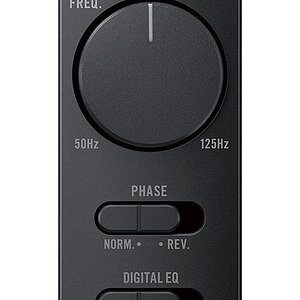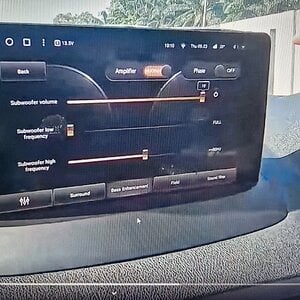Buck 5,000+ posts
little alien on campus
I had someone who wanted a box, but wasn't able to pay at the moment. We agreed that I would design a box for this person for free, if he promised to build the box I designed. It was made clear by me that this would be a somewhat test of a hybrid design enclosure. This entire design is designed; it's not randomly thrown together, but there's a lot of thought and sound-math that went into the layout. I'm not even sure how to categorize the order of this box or what the technical name of it would be. It's either a type of series 6th order bandpass, or it could possibly be considered a tapped and folded rear-loaded horn. Determining the exact tuning of this type of enclosure is difficult. I did not use a program like hornsrep to make this; I just did it with raw math. I would say more, but I don't want to give away too much secret sauce.
If this design works like I think it very well might, then it could have benefits both with musical systems and SPL systems, although the designs oriented around those would be different tunings and styles, but still a similarly sequenced layout. I am interested to see what anyone thinks about this, or if you can guess what I'm trying to do here and how this box wound up with this shape. I've been thinking about doing this type of design since like 2016 or so, just never had everything line up to actually do it. I did do another test box very similar to this one, but it was for a 120w 12" home audio subwoofer, and still hasn't been built yet, to my knowledge. The pressure of this vehicle-based system will be much higher than a HT system, and of course the environment works completely differently.
The box is for 2 SVR 12's, and it's truly designed to try to achieve something. Skar recommends 1.75-2 cubes ported for each 12, so 3.5-4 cubic feet for both 12's net. This box, overall, is very large for 2 12's, but it's exactly what I wanted it to be for what I was going for. Controlling the sound using just a ported box means that you're only capturing the rear wave of the sub, and the front wave of the sub is just blasting out into the open cabin. The subs, in a box like this, are having both the rear and front wave used to combine them together inside of the enclosure at certain frequencies, so that when they combine inside of the box, that changes the relative tuning of part of the box, and depending on the frequency being played due to phasing, the front and rear wave are going to be pressurizing parts of the boxes both differently and similarly. What I'll have to see is how the different tunings actually affect output, and having both sides of the subwoofer cone inside of the box can greatly change how much the cone moves at different frequencies. I tried to balance all of that out very well for bass heavy music (loud daily bass). Like I say, the goal is always to get better and better sounding. When you have a ton of space, but you don't have a ton of power and subs, then boxes like these can really help (potentially) create a lot more pressure than just regular sealed or ported boxes, and do so without losing quality/bandwidth or having an overly-large group delay.
I've also done this same hybrid-style design with sealed boxes, but they have to be tuned differently. I do know that works well with sealed, but with any ported chambers, the "relativity" of where everything is in the box and relative sized cross-sectional areas can directly change tuning. So, I kept all of that in mind, and that's why everything is exactly as it is, because I have the tunings exactly where I want them, at least for this hybrid box. Any further and I'll start giving away secret sauce, so here's the box. It was made to be a relatively simple box, just because it's sort of a test box. It's going in the back of a full size 48" wide SUV:





Someday I would love to try this type of a design in a wall. It's sort of like a clamshell, but a truly tuned clamshell, as in the clamshell part of the enclosure is actually tuned, but you have to be able to achieve a specific layout in order for this to work properly. Everything that has airspace has a relative impedance and tuning; I'll say that much. If you have the space, then it's probably a good idea to take advantage of that extra space for extra bass.
If this design works like I think it very well might, then it could have benefits both with musical systems and SPL systems, although the designs oriented around those would be different tunings and styles, but still a similarly sequenced layout. I am interested to see what anyone thinks about this, or if you can guess what I'm trying to do here and how this box wound up with this shape. I've been thinking about doing this type of design since like 2016 or so, just never had everything line up to actually do it. I did do another test box very similar to this one, but it was for a 120w 12" home audio subwoofer, and still hasn't been built yet, to my knowledge. The pressure of this vehicle-based system will be much higher than a HT system, and of course the environment works completely differently.
The box is for 2 SVR 12's, and it's truly designed to try to achieve something. Skar recommends 1.75-2 cubes ported for each 12, so 3.5-4 cubic feet for both 12's net. This box, overall, is very large for 2 12's, but it's exactly what I wanted it to be for what I was going for. Controlling the sound using just a ported box means that you're only capturing the rear wave of the sub, and the front wave of the sub is just blasting out into the open cabin. The subs, in a box like this, are having both the rear and front wave used to combine them together inside of the enclosure at certain frequencies, so that when they combine inside of the box, that changes the relative tuning of part of the box, and depending on the frequency being played due to phasing, the front and rear wave are going to be pressurizing parts of the boxes both differently and similarly. What I'll have to see is how the different tunings actually affect output, and having both sides of the subwoofer cone inside of the box can greatly change how much the cone moves at different frequencies. I tried to balance all of that out very well for bass heavy music (loud daily bass). Like I say, the goal is always to get better and better sounding. When you have a ton of space, but you don't have a ton of power and subs, then boxes like these can really help (potentially) create a lot more pressure than just regular sealed or ported boxes, and do so without losing quality/bandwidth or having an overly-large group delay.
I've also done this same hybrid-style design with sealed boxes, but they have to be tuned differently. I do know that works well with sealed, but with any ported chambers, the "relativity" of where everything is in the box and relative sized cross-sectional areas can directly change tuning. So, I kept all of that in mind, and that's why everything is exactly as it is, because I have the tunings exactly where I want them, at least for this hybrid box. Any further and I'll start giving away secret sauce, so here's the box. It was made to be a relatively simple box, just because it's sort of a test box. It's going in the back of a full size 48" wide SUV:
Someday I would love to try this type of a design in a wall. It's sort of like a clamshell, but a truly tuned clamshell, as in the clamshell part of the enclosure is actually tuned, but you have to be able to achieve a specific layout in order for this to work properly. Everything that has airspace has a relative impedance and tuning; I'll say that much. If you have the space, then it's probably a good idea to take advantage of that extra space for extra bass.


